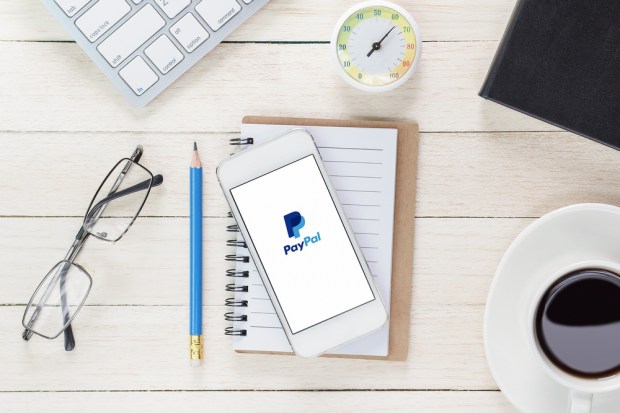PayPal’s Power Playing Week

PayPal has had a pretty busy 2016.
And while the first four months of the year in general have been active — particularly as PayPal has worked to distinguish itself as a standalone entity after spending over a decade as the payments arm of eBay — the last week has seen announcements coming left and right out of PayPal HQ in San Jose.
For instance…
The Big Buy-In On Acorn
The most eye-catching move of the week was also, as of the writing of this article, the curtain call on this week’s adventures.
According to reports, the firm that wants to reinvent money is throwing some of its own behind a small mobile app called Acorns Grow — insofar as it led the startup’s $30 million funding round. Other investors included Rakuten FinTech Fund, Greycroft Partners and e.ventures.
Acorns is, as the name suggests, designed around the premise that small investments made early and left alone grow into big piles of money later, as long as they’re properly invested. You know, the “mighty oaks from little acorns grow” theory.
To help investors without piles of cash get those mighty oaks with dollar bills on them, Acorn allows them to deposit small amounts that automatically go into a brokerage account that buys into a group of exchange-traded funds.
Acorns itself acts as a robo-advisory company that works with other online firms that manage clients’ money. As of yet, there are no specific deals underway or planned for PayPal and Acorns, but that hasn’t stopped a ton of speculation on the possibilities.
Particularly favored as a potential marriage that makes sense is a pairing of Acorns with Venmo, since they share a target audience of millennials with a mobile-friendly outlook.
“There’s lots of potential between Acorns and Venmo and Acorns and PayPal,” incoming Acorns Chief Executive Noah Kerner said in an interview with The Wall Street Journal.
With its new investment, PayPal will have a minority stake in Acorns and, as a result, will be “looking forward to developing a strategic partnership,” according to a PayPal spokesperson.
Acorns itself is a bit of an acorn, with about 850,000 active investor accounts and $62 million in funding raised from its strategic partners. But then, Acorns has only been “growing” for 20 months. And with millennials as its targeted audience, there’s still room for mighty oaks to grow.
Acorns’ users are charged $1 per month for accounts with less than $5,000 and 0.25 percent for anything larger.
“Young people can keep growing their account in small amounts through lots of different sources,” Kerner told TechCrunch. “With micro-investing, anyone can start growing wealth.”
The Good New Numbers From comScore
A little under a year ago, in July 2015, PayPal’s One Touch began its rollout in the U.S. across the mobile Web. Today, it’s available to any PayPal customer, anywhere on Earth, and if comScore’s numbers are any proof, it’s doing quite well at pushing checkout conversions on eCommerce sites.
The comScore data is derived from its 1 million consumer panel’s eCommerce purchases at 15 retail domains. Those firms, selected by comScore, range from luxury retailers, to electronics manufacturers, to specialty retailers, to discount sites. The survey results reveal that PayPal converts online buyers 87.5 percent of the time.
That conversion rate compares to 51.1 percent rate for Visa Checkout and 45.6 percent for “all other forms” of payment. Card-on-file was the most common “other” in this category.
“For us, it’s this validation of what we’ve been saying for a while,” PayPal Global Head of Product Communications Anuj Nayar told Karen Webster in a recent conversation. “You look at conversion rate, which is impressive, especially when you look at the sheer volume of what we see in the form of transactions. Last quarter, we did 15 million transactions a day.”
Nayar also noted that it was also far from shocked with the results, since internal data has indicated since One Touch launched last summer that the product had struck a chord with online shoppers looking for a readymade, tap-and-go solution from a very recognizable digital payments brand.
“We think that this is a validation of what we’ve been saying, which is One Touch is a revolutionary advance in online buying,” Nayar noted.
As part of this announcement, PayPal also released new numbers for One Touch penetration — now, some 21 million people in every market that PayPal serves.
“We are growing rapidly. Just this year, we were 15 million in January, 18 million in March and now we are 21 million in April. This is the fastest rollout of any product PayPal has ever had. What we see is that 87.5 percent is big. That means that when people see the PayPal button, they are clicking it.”
Yet, PayPal still has some work to do on its in-store method. Despite years of experimentation, traction has been fleeting. And reversing that trend, according to its own research, will matter more than ever as the lines between in-app, in-store and on Web are increasingly blurred and being a “best of” for only one channel won’t work anymore.
What The World Is Looking For From Mobile
Consumers want mobile payments solutions that are about more than just paying using their mobile phones when they are shopping in a store.
That’s the main takeaway from PayPal’s global study of retailers worldwide. Consumers and the merchants that serve them are very enthusiastic about mobile’s potential as a commerce-enhancing tool; they just would like those use cases to be not so separate.
Those surveyed included merchants in apparel, electronics, mass retail, gas, grocery, quick-service restaurants and specialty retail. Participants included senior leaders across technology, finance and marketing. The survey identified four interconnected stages in retail and how mobile could be used to optimize all four:
- Being motivated to shop
- Searching for what to buy
- Deciding what to buy
- Paying — and receiving rewards for doing it.
“The key tenet is that consumers are looking to find ways to use mobile through the entire shopping experience, not just to pay,” Nayar told PYMNTS.
“Customers want to be able to use mobile to search while they’re shopping, make comparisons, actually make the payment and then find ways to tie back into post-payment rewards accounts,” Nayar noted. “Consumers want something to take them all the way through.”
And that, Nayar said, is where the technology end of things comes up most conspicuously lacking on both the mobile and consumer end. The solutions are there, but they aren’t quite frictionless. Search can be arduous, and payments can be friction-filled, especially if there are rewards to be factored in.
“There are very few technologies that allow consumers to follow the process all the way through,” Nayar said. “PayPal’s vision for this is very different. This [on and offline] is all one market, and all payments are moving online, whether you’re shopping online or not.”
“We’ve been experimenting in-store for four years, and it’s not PayPal pushing in-store — it’s consumers pushing us there,” Nayar told PYMNTS.
And that bigger sea change — in both retail and payments — is pretty clearly the bigger picture that PayPal is increasingly keeping its eyes on.
A pretty big picture in which enabling retail payments is just a start — the acorn that it planted nearly 18 years ago that has grown into a mighty digital payments platform.
